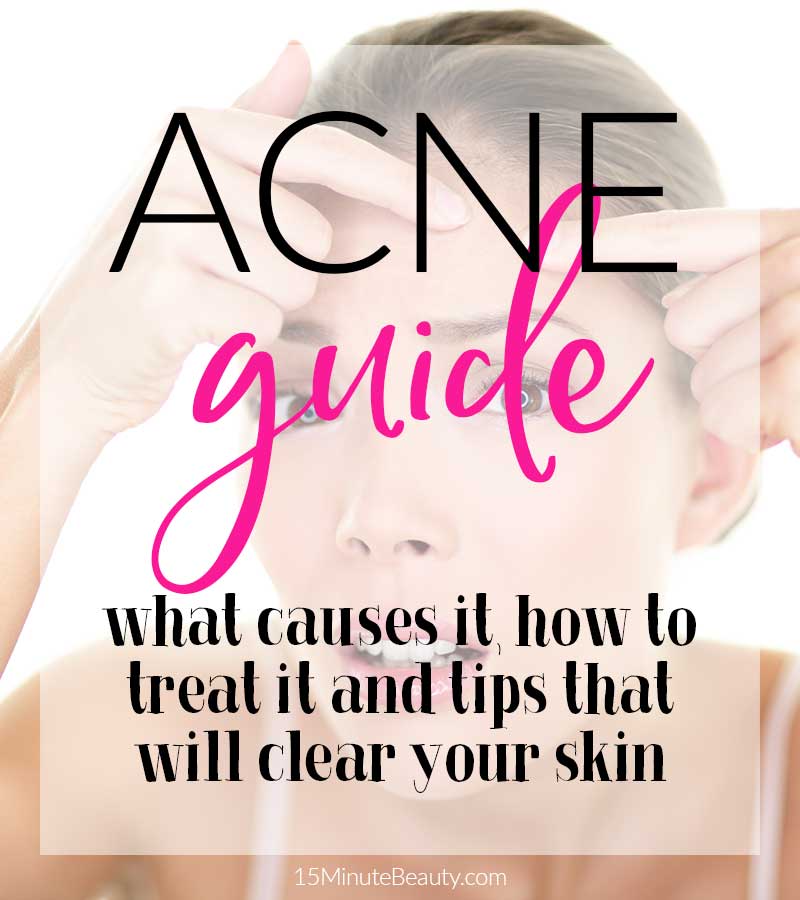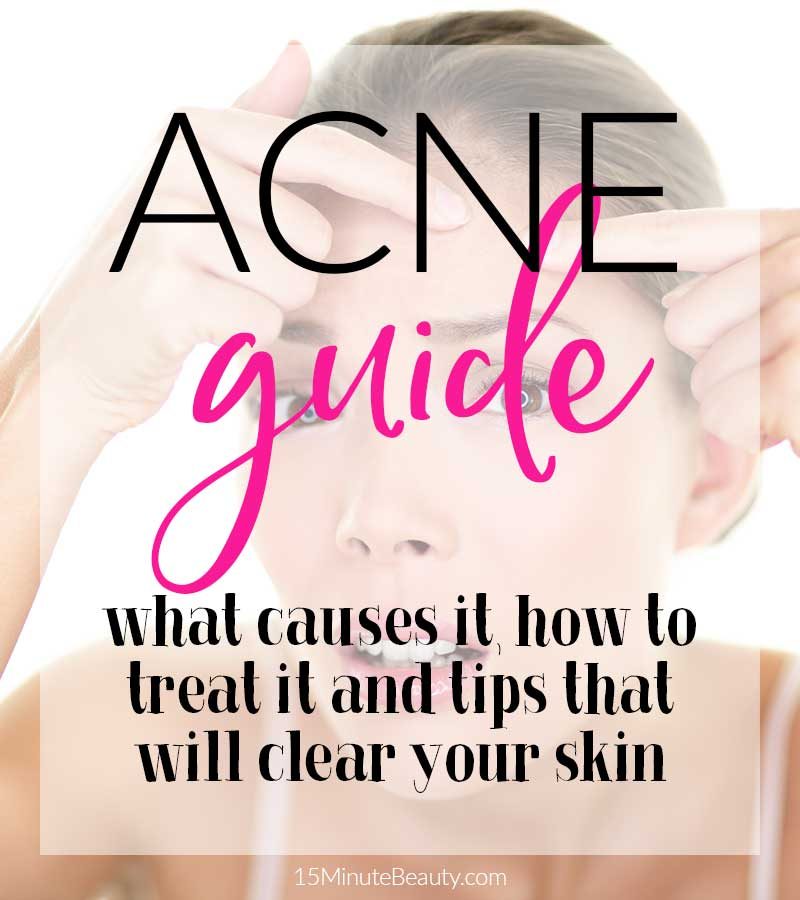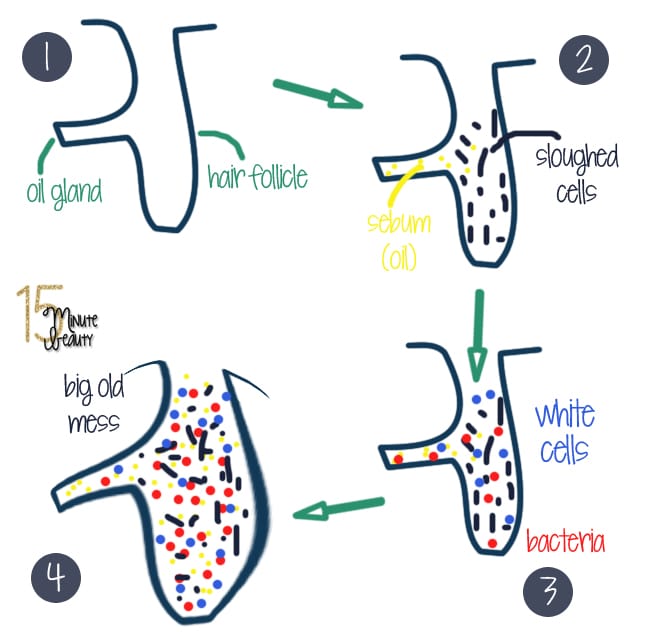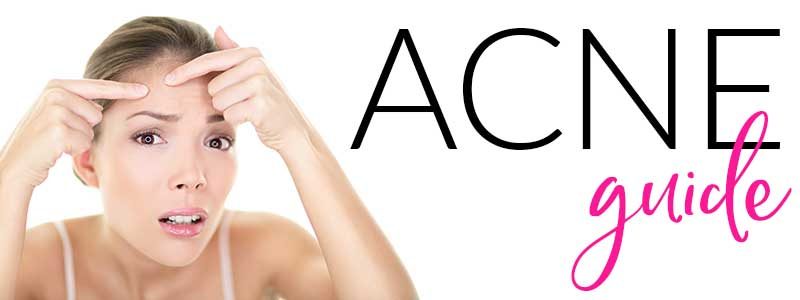In writing a post recently, I realized that I didn’t have a good post that explained the basics of pimples, how they start and how the typical over the counter ingredients work to treat it. There’s a reason you see the same active ingredients over and over in over the counter treatment products. There are many ways to target acne, but only a few key ingredients to do that.
Factors Involved in Acne
There are 4 main factors that interact to result in acne. These factors become an issue with puberty in large part because of maturation of different process and hormonal effects.
1. Oil Glands and Sebum Production
Whether you just say oil or want to be fancy and say sebum, once puberty hits the oil glands in your skin become much more active. They secrete sebum to the surface of your skin via hair follicles, though the ability of the hair follicle to secrete the sebum as it is released may be overwhelmed, resulting in a back up and blockage of the sebum within the hair follicle.
The production of sebum by the oil glands is decreased by antiandrogens, estrogens, and retinoids. All three are utilized by physicians in treating acne. The oil gland is located deep within the skin, typically beyond where topical treatments could reach them.
Note these oil glands are found most frequently on the face, back, shoulders and chest. They are also larger in these locations.
2. Hair Follicle Maturation
Once you hit puberty the hair follicles in the skin have had a change in the skin cells that line them. The skin cells are now keratinized, meaning they under go the same process of maturation and then sloughing that the epidermis undergoes. This process often goes smoothly, but the skin cells do tend to clump up within the hair follicle. This is in part because of positive and negative charges on the surface of the cells, but they’re also sticky because of the sebum present in the oil gland. More on this below.
3. Bacteria
The reason you see antibiotics used so frequently in treatment of acne is due to the presence of Propionibacterium acnes within blemishes and its contribution to the acne. In large part, it is thought that P. Acnes increases inflammation by releasing chemicals increasing the immune response.
4. Inflammation
The body starts an inflammatory response due to the presence of the bacteria, clogged pore, etc.
How Blemishes Form
First, a brief look at how acne forms. There are obviously many more things involved in this process (and really, no one really understands the entire process. If we did we’d have a magic treatment to prevent all acne). But, to understand how treatments work on acne, you first need to understand the basics of how those blemishes are formed.
1. First, when you have a typical hair follicle, you’ll find a small oil gland off of it. The normal cell cycle is for skin cells to slough off (aka- just basically fall off), and for new cells to be created underneath to replace them.
2. For some reason, within the hair follicle some of these cells will start to accumulate and clump together, rather than just going out as they usually do. As this happens, the oil production will increase some, the cells will clump together more, and the sides of the hair follicle will start to have inflammation. The inflammation contributes to more skin cells sloughing, clumping, more oil, etc. It basically becomes a downward spiral. The hair follicle starts to get clogged with oil and clumped skin cells.
3. As the hair follicle gets clogged with debris, you’ll notice that rather than just having the walls of the hair follicle with inflammation, some of those cells will start to move into the debris as well. These are various types of white blood cells, and when they accumulate together you probably know them better as pus. Around this time you’ll also have bacteria entering the mix. Typically this is p. acnes, which is usually just found around on your skin and such. It loves to eat oil, so this environment is perfect for it to thrive.
4. As the process spirals more and more out of control that hair shaft just fills up with everything. It will get big and swollen as it fills with sloughed skin cells, inflammation, bacteria and more sebum. You may even have the shaft rupture, allowing everything to infiltrate into the surrounding skin. That’s not so bueno. If it is severe enough you might even see scarring later on down the road.
Suggested Acne Posts
Ingredient Specific Posts
How Benzoyl Peroxide Works
The Best Benzoyl Peroxide Products




